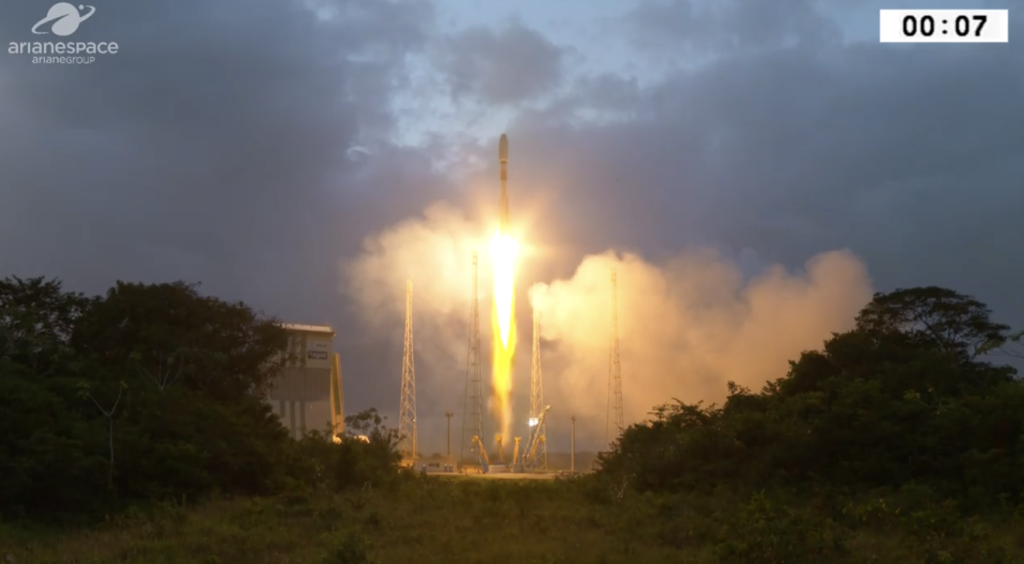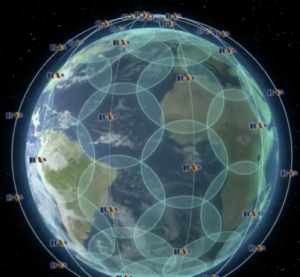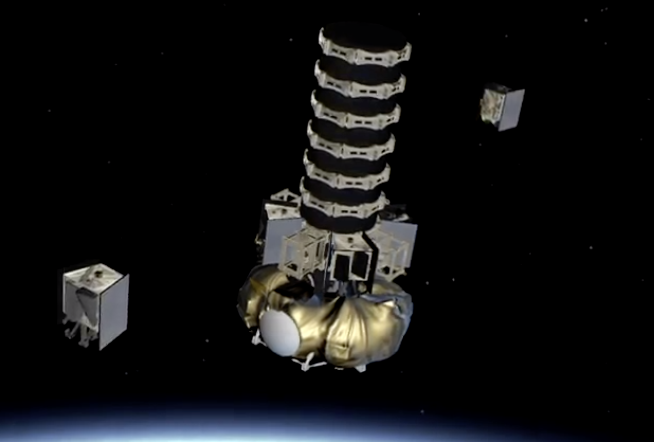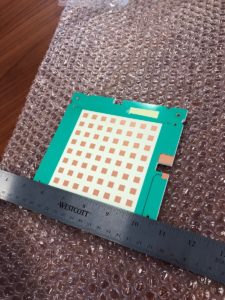Everything about satellite broadband internet tends to be big and expensive.
Big expensive satellites.
Big awkward dish antennas that need to be precisely aimed.
And of course - service costs that leave true broadband practical only for those with the biggest budgets too.
OneWeb has set out to change all of this.

We've been tracking OneWeb's mission to bring "Internet to everyone, everywhere on Earth" since 2015, and yesterday this incredible vision took a huge step towards reality with the spectacular launch of the first six OneWeb satellites.
Now just 594 more to go.
Video Version of this Story:
Subscribe to our YouTube Channel
Table of Contents
OneWeb’s Mass-Produced Constellation

OneWeb is building a low earth orbit (LEO) constellation of satellites 750 miles above the surface of the earth - close enough to allow for low-latency communication.
At this altitude satellites are zipping through the sky, and OneWeb says that it will take 600 satellites to provide uninterrupted global coverage so that at least one satellite is always in view overhead.
That is a LOT of satellites - a constellation this large has never been attempted before.
The Iridium NEXT constellation that was just completed consists of just 66 active satellites, and the GPS network currently has just 31 satellites in orbit.
To tackle this ambitious goal - OneWeb is following in the footsteps of Henry Ford by setting up a factory and an assembly line to mass produce identical satellites at an unprecedented pace of ten per week.
Think of it like the Model-T of satellite communications. Ford didn't invent the car, he just found a way to make building one affordable.
OneWeb has built just ten satellites so far, and has launched the first six to make sure that there are no issues with the design.
But the OneWeb factory in Florida is ready to kick into high gear, and OneWeb says that they already have twenty additional launches lined up, and they have built a satellite deployment system that can transport 32 satellites into orbit per launch - popping them off four at a time like kernels popping off of a corn cob.

OneWeb's Florida factory will soon be ramping up production, and by the end of this year OneWeb is hopping to be able to keep up a pace of one launch every 21 days!
If all goes according to plan, this means that the OneWeb constellation will be ready for global coverage by the end of 2020.
Flat, Small, And Affordable Antennas

Getting the satellites into orbit is only one challenge.
Potentially even trickier is coming out with receivers to connect to the network that are affordable and easy to use.
OneWeb hasn't revealed too many details in this regard yet, other than saying that they intend to make satellite as easy to use as cellular - just pop in a SIM card, and make sure that your antenna is relatively flat and has a clear view of the sky.
No complicated aiming required.
OneWeb is accomplishing this by building small flat panel electronically steerable antennas. Similar designs have been shown off by companies like Kymeta, with antennas prices over $10,000.
OneWeb is aiming to be able to build an antenna for just $15.
OneWeb founder Greg Wyler shared his breakthrough last month:
"The most overlooked yet critical component for satellite systems to help bridge the digital divide are ground antennas. I have had a team quietly working on this problem for years. 503 versions later we got it. Meet the new $15 fully steerable low power flat panel.
Groundbreaking.
He claims this tiny 5" antenna can deliver 20Mbps speeds:
"Heading to the Launch I stopped by to check the next rev of our antenna. Hard to believe this little thing will get over 20mbps!!👍 The next size up should be more than 60mbps. Maybe a stick on antenna?"
The Future of OneWeb

Assuming no issues are discovered with the first six satellites, OneWeb hopes to begin monthly launches starting in August or September to begin deploying the rest of the network.
Global coverage and service plan details will have to wait until the first 600 are in orbit, but because the satellites are in a polar orbit and they come together over the poles it will be possible for OneWeb to bring service to high latitudes sooner than the rest of the world.
OneWeb has said that service may launch (at least in demonstration form) in Alaska by the end of 2019, potentially bringing true broadband connectivity to some remote communities for the very first time.
Overall OneWeb will keep launching even after the first 600 satellites are in orbit - eventually bringing out a second generation satellite with 50x more throughput - with a total network size of 1,980 satellites planned.
We wish OneWeb the best of luck, and we look forward to affordable global satellite broadband options at last becoming practical!
Further Reading
- Satellite Internet Options for RVers - Our featured guide on all the current and future satellite internet options of interest to RVers.
- 2018 Mobile Internet Year in Review & Looking Forward Into 2019 - Our annual look at the state of satellite internet options, including a deeper look at the latest from Iridium, ViaSat, and SpaceX.
- SpaceX Launching First Two “Starlink” Broadband Internet Satellites - SpaceX is also working to build a truly massive satellite broadband constellation, with FCC licenses secured for 11,943 satellites - half of which need to be launched within the next six years!
And here is all of our other recent satellite internet coverage:









 Mobile Internet Resource Center (dba Two Steps Beyond LLC) is founded by Chris & Cherie of
Mobile Internet Resource Center (dba Two Steps Beyond LLC) is founded by Chris & Cherie of